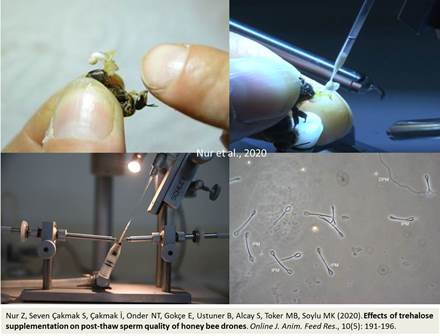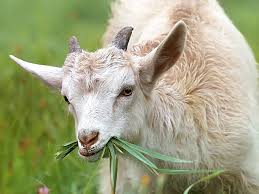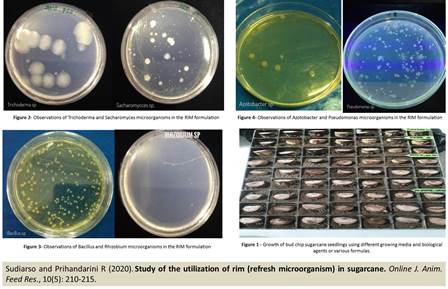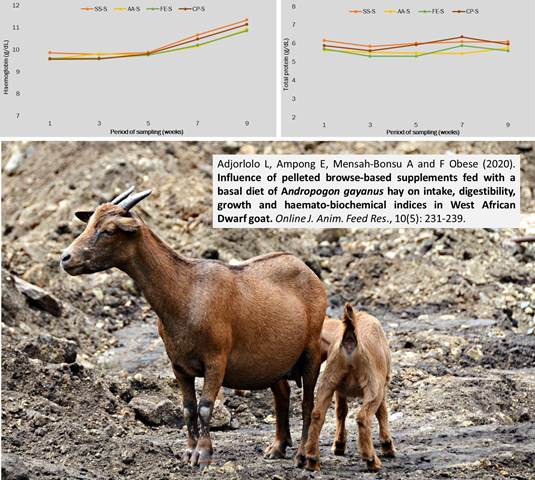Previous issue | Next issue | Archive
![]() Volume 10 (5); September 25, 2020 [Booklet] [EndNote XML for Agris]
Volume 10 (5); September 25, 2020 [Booklet] [EndNote XML for Agris]
Effects of trehalose supplementation on post-thaw sperm quality of honey bee drones
Nur Z, Seven Çakmak S, Çakmak İ, Onder NT, Gokçe E, Ustuner B, Alcay S, Toker MB, Soylu MK
Online J. Anim. Feed Res., 10(5): 191-196, 2020; pii: S222877012000027-10
DOI: https://dx.doi.org/10.51227/ojafr.2020.27
Abstract: Sperm cryopreservation has led to an increase in widespread use and has it made it more practical to use artificial insemination not only for domestic animals but also for non-mammalian species and humans. Dimethyl Sulfoxide (DMSO) was the most frequently used cryoprotectant by protecting honey bee drone semen when freezing it. The objective of this study was to determine the effects of Trehalose (0.05M, 0.1M or none at all) on extending the viability of semen with 12% DMSO that was based on sperm motility and plasma membrane functional integrity of frozen drone semen. Three different freezing extender solutions were designated as follows; the 0.05M Trehalose, 0.1M Trehalose and Trehalose free (control group). Semen motility and plasma membrane functional integrity were evaluated under phase-contrast microscopy (400X). We found that in control group, DMSO is a critical substance in freezing extender and supports post-thaw sperm motility (53%) and plasma membrane functional integrity (79%) to some extent. Addition of 0.05M Trehalose to the extender leads to a small recovery of post-thaw motility (55%) and plasma membrane integrity (89%), but when Trehalose is added at 0.1M concentration, this led to significantly better post-thaw motility (62%) and plasma membrane integrity (91%). In conclusion, the freeze-thaw process is detrimental to post-thaw drone semen viability. The addition of 0.1 or 0.05M Trehalose to the freezing media containing 12% DMSO has been seen better post-thaw cell motility and plasma membrane integrity of spermatozoa.
Keywords: Honey bee, Drone, Semen, Cryoprotectant, DMSO, Trehalose
[Full text-PDF] [HTML] [ePub] [Export from ePrint]
Research Paper
Implementation of community based breeding program to improve growth rate and milk production performance of abergelle goat
Amare B, Gobeze M and Wondim B.
Online J. Anim. Feed Res., 10(5): 197-202, 2020; pii: S222877012000028-10
DOI: https://dx.doi.org/10.51227/ojafr.2020.28
Abstract: The study aimed to identify farmers breeding objective and trait preference criteria, devising and implementing a pilot selective breeding scheme and establishing a model goat development scheme that can be applied under village conditions. A total of 1372 goats from 32 households were monitored for selection and data collection on growth performance, milk production, reproductive performance and other important characteristics. Best bucks were selected at yearly basis based on their indexed estimated breeding value and unselected bucks were culled from the population through castration and sale. Birth type, year of birth and parity had significant effect on pre-weaning growth performances. In this intervened pilot village with three round selections mean birth and yearling weight of kids had increased from 1.6±0.05 Kg and 15.4±0.4 Kg to 2.3±0.06 Kg and 16.8±0.45 Kg, respectively. Total lactation milk yield was significantly affected by birth season and year while lactation length was affected by parity of doe’s in addition to birth season and year. Average daily milk yield of doe’s was 422.3±120.3 ml and it was significantly differed between years. Higher body weight of the adult male (birth weight through yearling weight) with its color and strong feeding behavior were the most preferable traits, on the other hand milk production and good mothering ability were set for the doe’s. In general, the breeding program was feasible, simple and compatible strategy to the smallholder farmers breeding practices as it avoids negative selection by allowing elite selected bucks for next generation. Genetic improvement in a single pilot-village will not bring an overall population improvement of the breed, and hence there is a need of scaling out of the breeding program to all the neighboring communities. Reproductive technologies (estrus synchronization with timed artificial insemination) need to be used. Since larger number of nine month to yearling male goats are leaving the village in one or other reasons, selection of bucks starting from nine months of age should be emphasized in the future. All doe’s are not productive in terms of higher litter size and milk production at every stage of their reproductive age. So, keeping of very high parity dams will not provide profitable income to the households. Forage development strategies should be designed to improve data quality, increase production capacity of the breed and sustainability of the breeding program.
Keywords: Abergelle goat, Birth weight, Selection, Traditional breeding system, Yearling weight
[Full text-PDF] [HTML] [ePub] [Export from ePrint]
Research Paper
Prevalence of ectoparasites in small ruminants (case: afar region of Ethiopia)
Feki E, Gebre S, Shumet A, Gobena Y, Mohammed H, Gebregergious A.
Online J. Anim. Feed Res., 10(5): 203-209, 2020; pii: S222877012000029-10
DOI: https://dx.doi.org/10.51227/ojafr.2020.29
Abstract: A study was conducted from August 2016 to November 2017 to investigate the prevalance of major ectoparasites of small ruminant and associated risk factors in fourteen districts found in the three Zones of Afar Regional State of Ethiopia. A total of 5376 small ruminants were examined to determine the prevalence of ecto-parasites, includes 3696 goats and 1680 sheep. 1443 (39.00%) goats and 839 (49.90%) sheep were found infested with different ectoparasites. The result of the study showed that statically significant difference was found between species of sheep and goats in related to ectoparasite infestation. The overall prevalence of ectoparasite indiocates that 2282 (42.45%) small ruminants were infested by ectoparasites. The most common ectoparasites encountered in order of their predominance were 1968 (36.6%), 155 (2.88%), 105 (1.95%) and 54 (0.56 %) ticks, mange mites, lice and flea infestation, respectively. In the present study, five genera of ticks (Rhipicephalus, Hyalomma, Amblyomma and Boophilus), two genera of lice (Linognathus and Damalina) three genera of mites (Sarcoptes, Demodex and Psoroptes), and one genera of flea ctenocephalides were identified on the study animals. Rhipicephalus, Hylomma, Boophilus, Ambylomma was identified as the predominant genera. The prevalence of ectoparasite infestation for different age groups, sex and body condition score were found to vary significantly. In conclusion, among ectoparasites species recorded in the area ticks was found to be highly prevalent in sheep and goats. Tick was predominant followed by mite, lice and flea. The present study revealed an overall ectoparasite prevalence of 2282 (42.45%) in both small ruminant species. Of this, 839 (49.9%) and 1443 (39%) was in sheep and goats, respectively. It also revealed that ticks, mites, lice and fleas are common ectoparasites in the study area. to reduce high prevalence of ectoparasites and their impact on the productivity in small ruminants requires immediate attention, control interventions.
Keywords: Ectoparasite, Ethiopia, Prevalence, Ruminant, Ticks.
[Full text-PDF] [HTML] [ePub] [Export from ePrint]
Research Paper
Study of the utilization of RIM (refresh microorganism) in sugarcane
Sudiarso and Prihandarini R.
Online J. Anim. Feed Res., 10(5): 210-215, 2020; pii: S222877012000030-10
DOI: https://dx.doi.org/10.51227/ojafr.2020.30
Abstract: Sugarcane is used by its stems as the main raw material for sugar. In addition to improving soil structure, soil organic matter also supplies soil nutrients, especially Nitrogen, Phosphor and Sulfur, increases soil aggregate stability, increases groundwater holding capacity and increases soil recoverability. To overcome this problem, the use of RIM microorganism (refresh microorganism) technology in sugarcane fields needs to be done to reduce the use of chemical fertilizers which will ultimately lead to the realization of the application of organic farming systems in sugarcane cultivation. The purpose of this study was to study the effect of different dosage applications of RIM and various sources of organic matter on the growth and yield of sugarcane. This research consisted of two stages, namely in the greenhouse and in the field, namely (1) testing the growth of bud chip sugarcane seedlings using different growth media and microorganism technology (2) testing the effect of RIM applications and organic matter on the growth and yield of sugarcane. The use of RIM's Biological Agents by using Tricho derma, Sacharomyces, Bacillus, Rhizobium, Azotobacter and Pseudomonas bacteria was able to increase the growth of sugarcane buds. The combination of using RIM and manure can increase the number of leaves and the percentage of growing sugarcane.
Keywords: Beneficial microorganism, Organic Material. RIM's Biological Agent, Sugarcane.
[Full text-PDF] [HTML] [epub] [Export from ePrint]
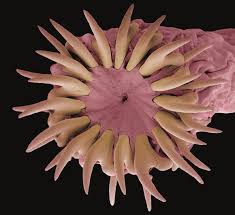
Review
Systematic review on gastrointestinal helminths of domestic ruminants in Ethiopia
Fentahun T.
Online J. Anim. Feed Res., 10(5): 216-230, 2020; pii: S222877012000031-10
DOI: https://dx.doi.org/10.51227/ojafr.2020.31
Abstract: This systemic review was conducted to identify, critically assess, and bring together available data from primary researches conducted so far on gastrointestinal (GI) helminthes of domestic ruminants in Ethiopia. In the country, GI helminths of domestic ruminants have been identified; examined and informative statistics has been extracted since a few decades ago. For this review, relevant articles were retrieved from English databases: PubMed, Google Scholar, Science Direct, Web of Science and Scientific Information Database (SID). Additional studies were recognized by scanning the African Journal Online (AJOL) that includes the Ethiopian Veterinary Journal and Bulletin of Animal Health and Production. Out of retrieved (n=154) articles, thirty three (n=37) articles which fulfilled the eligibility criteria were selected. Accordingly, twenty three GI helminthes species which belong to the three classes of helminthes have been found to occur in domestic ruminants in the country. The main genera reported so far are Haemonchus, Strongyloides, Trichostrongylus, Oesophagostomum, Bunostomum, Fasciola, Monezia and Paramphistomum whereas, Haemochus contortus, Moneizia expansa and Fasciolahepatica are the most frequently reported species from Nematode, Cestode and Trematode classes respectively. The overall GI helminths prevalence ranged from 2.3% to 100% were reported. Simple flotation, sedimentation, modified McMaster technique and faecal culture are the most common and routine diagnostic methods which have been used in the country. Management aspects like husbandry practices, climate and host influences are found to be the principal contributing factors that affect GI helminths infections. So far, the control of GI parasites in the country is mainly focusing on the use of anthelmintics. Consequently, due to the lack of effective control strategies, antihelmintics are exclusively used which result in antihelmintics resistance. Generally, occurrence, epidemiological features, realistic control strategies, common diagnostic procedures and frequently encountered species are reviewed. Finally, the relevance of epidemiological knowledge and the development of efficient, sustainable and conventional control measures which cover wider ago-climatic zones of the country are suggested for controlling GI helminths infections and should be assessed timely.
Keywords: Anthelmintics, Domestic ruminant, Ethiopia, Gastrointestinal helminthes.
[Full text-PDF] [HTML] [ePub] [Export from ePrint]
Research Paper
Influence of pelleted browse-based supplements fed with a basal diet of Andropogon gayanus hay on intake, digestibility, growth and haemato-biochemical indices in West African Dwarf goat
Adjorlolo L, Ampong E, Mensah-Bonsu A and F Obese.
Online J. Anim. Feed Res., 10(5): 231-239, 2020; pii: S222877012000032-10
DOI: https://dx.doi.org/10.51227/ojafr.2020.32
Abstract: This study evaluated the nutritional value of pelleted supplements based on four major feed resources fed to small ruminants by smallholder farmers in the Accra Plains. Leaves of Samanea saman, Acacia auriculiformis and Ficus exasperata, and cassava peels were dried, milled, mixed with other ingredients and pelleted to form Samanea saman (SS-S), Acacia auriculiformis (AA-S), Ficus exasperata (FE-S) and cassava peel (CP-S) based supplements. The supplements were fed to twenty West African Dwarf goats on a basal diet of Andropogon gayanus (Gamba grass) hay in a completely randomised design experiment. Voluntary intake of dry matter did not differ (P>0.05) by the type of supplement. However, crude protein intake was higher (P<0.05) in goats fed FE-S than those fed CP-S. Acid detergent fibre intake was higher (P<0.05) for SS-S, AA-S and FE-S than CP-S. Digestibility of dry matter, organic matter, crude protein, acid detergent fibre and neutral detergent fibre were lowest (P<0.05) for goats on CP-S. Average daily weight gain and Feed conversion ratio were not affected (P>0.05) by dietary treatments. Also, dietary treatment did not affect (P>0.05) the concentrations haematological and blood biochemical constituents determined except urea which was higher (P<0.05) in goats fed SS-S than the other treatments. In conclusion, the above results suggest that browse-based and cassava peel-based supplements could be fed to confined goats on roughage diets especially in the dry season without any deleterious effects on intake, growth and physiology of goats.
Keywords: Accra plains, Performance, Shrub Leaves, Smallholder Farmers, Supplementation
[Full text-PDF] [HTML] [ePub] [Export from ePrint]
Research Paper
Phenotypic characterization of genetic resources of indigenous cattle in West Gondar zone of Ethiopia
Emru E, Abegaz S, Getu A, Mengistu A, Fantahun T.
Online J. Anim. Feed Res., 10(5): 240-250, 2020; pii: S222877012000033-10
DOI: https://dx.doi.org/10.51227/ojafr.2020.33
Abstract: This study was conducted to identify and phenotypic characterization of the existing indigenous cattle genetic resources in the three districts of West Gondar zone of Amhara Region based on their descriptive morphological characteristics. A total of six sampling sites were purposively selected based on the distribution of unique cattle types. Key informant and focus group discussions were used to identify the new genetic resources. A total of 180 adult male and 720 female cattle were selected for 20 morphological and 9 biometrical traits. The focus group discussions revealed that, diversified indigenous cattle were found (Fellata in Quara, Rutana in Metema, Miramir in West Armachiho and Qocherie from all Districts). The overall mean linear body measurements of male cattle for horn length, body length, heart girth, canon bone length and cannon bone circumferences were 23.92 cm, 127.97 cm, 161.15cm, 20.37 cm and 19.81 respectively. Females had horn length (25.86 cm), body length (122.85 cm), pelvic width (37.47 cm) and canon bone length (19.26 cm), canon bone circumferences (18.36 cm) and mouth circumferences (36 cm). In a discriminate analysis, all sampled populations were classified with the overall hit rates of 75% for males and 60% for females. The shortest and longest mehalanobis distances were between Abrajira with Dubaba (0.762) and Gendawuha Birshign with Mirt Gelegu (37.88) for male and Gendawuha Birshign with Dubaba (0.358) and Gendawuha Birshign with Mirt Gelegu (29.37) for females, respectively. In stepwise discriminate analysis the top traits which were highly discriminated male cattle populations were cannon bone length, horn length and cannon bone circumferences. This was similar in females except the replacement of cannon bone circumferences with mouth circumferences. Three clusters were formed (Fellata from Mirt Gelegu in cluster one and Qocherie from Gendawuha Birshign, Dubaba and Abrajira in cluster two and Rutta from Lominat Forgena and Miramir from Gilal Wuha in cluster three. Three indigenous cattle types were identified with their phenotypic features and further molecular characterization should be done to confirm their genetic distinctiveness.
Keywords: Cattle, Characterization, Genetic Resources, Phenotype, West Gondar Region.
[Full text-PDF] [HTML] [ePub] [Export from ePrint]
Previous issue | Next issue | Archive![]()
| < Prev | Next > |
|---|

